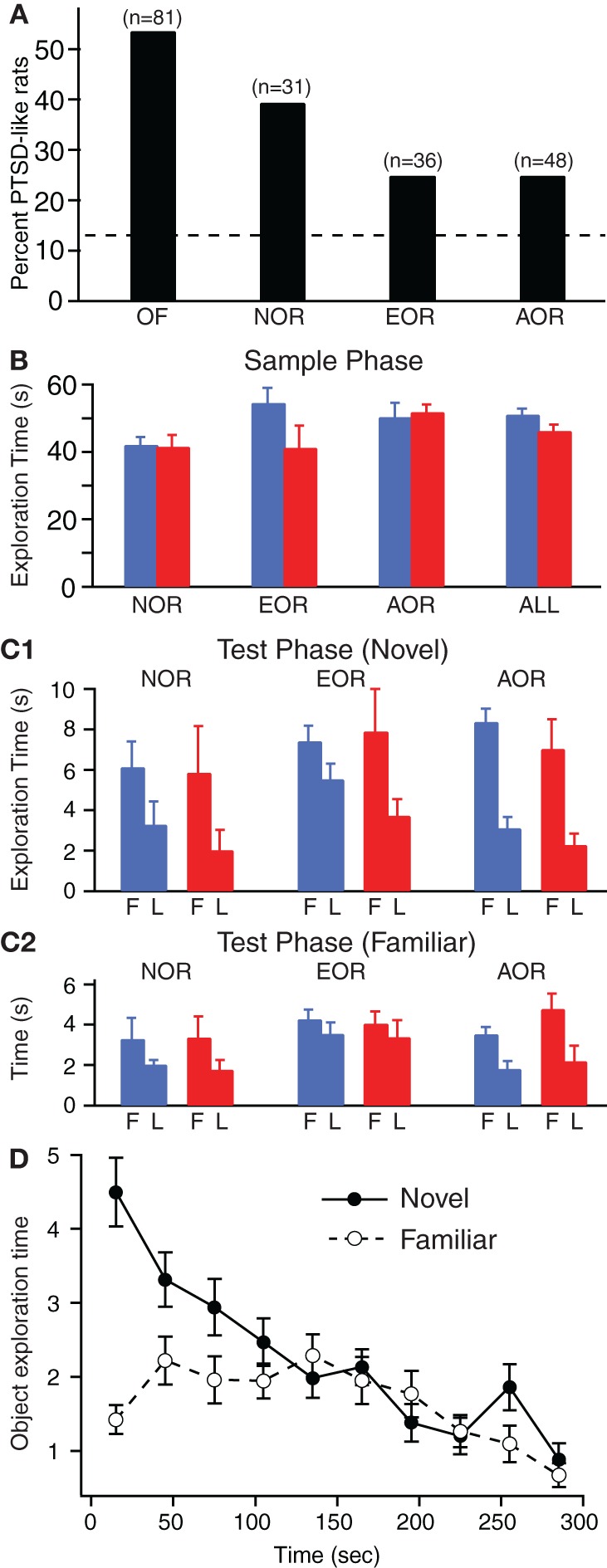Figure 2.

Incidence of PTSD-like phenotype and common patterns of exploratory behavior across the NOR, EOR, and AOR tasks. (A) Different samples of rats were tested on the EPM one week after predatory threat and classified as PTSD-like if they failed to explore the open arms. Depending on the sample (n's above each bar), prior to predatory threat, the rats were either subjected to the open field test (OF) or one of the object (NOR) or object-place recognition (EOR, AOR) tasks. (B) Total time exploring objects during the sample phase of the three tasks in Resilient (blue) vs. PTSD-like (red) rats. Data obtained in the three rat samples is combined on the right (ALL). (C) Time exploring novel (C1) or familiar (C2) item during the first (F) and last minute (L) of the testing phase in Resilient (blue) vs. PTSD-like (red) rats. (D) Fluctuations in time spent exploring the novel (solid circles and continuous line) or familiar (empty circles and dashed line) item during the test phase of the AOR task. The data is plotted in 30 s bins.
